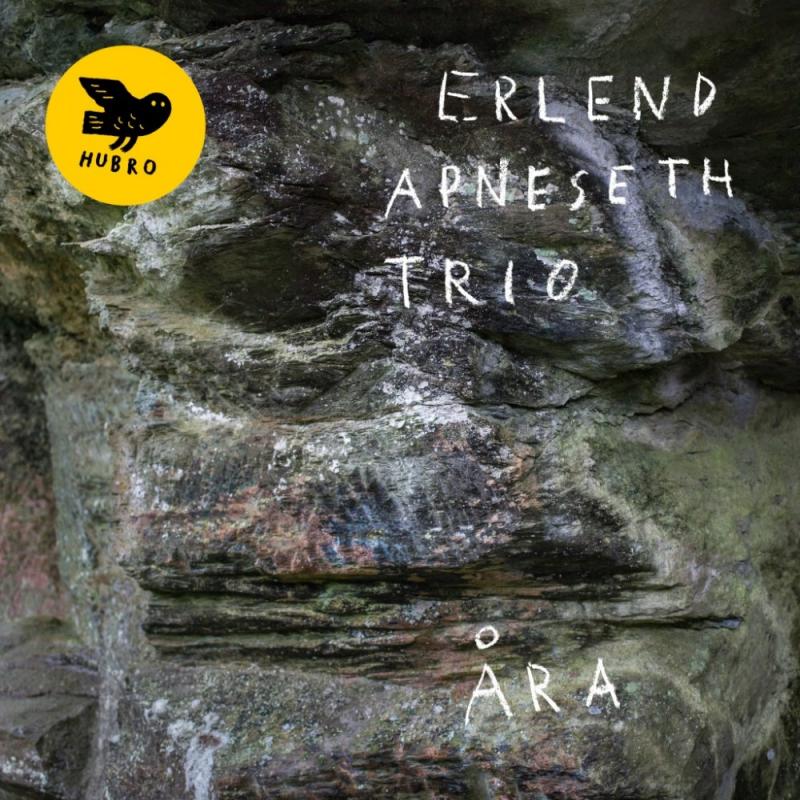CD: Erlend Apneseth Trio - Åra | reviews, news & interviews
CD: Erlend Apneseth Trio - Åra
CD: Erlend Apneseth Trio - Åra
Terrific recontextualisation of Norway’s Hardanger Fiddle

Although the Hardanger Fiddle is regarded as a traditional Norwegian instrument, its use stretches back to no earlier than the middle of the 17th century. The music players summon from its strings is more easily seen as traditional though: music to dance to.
Against this background, players have emerged who explore the instrument's potential to create music which cannot be seen as traditional. Nils Økland leads the field. He has taken the Hardanger Fiddle to jazz and the overtly experimental without sacrificing its essential character. The formally schooled Erlend Apneseth’s résumé is not as long as Økland’s but judging by Åra, his second album with the Erlend Apneseth Trio and fourth overall, the new frameworks he is setting for the instrument are as significant as those devised by Økland.
Åra consists of ten tracks. Apneseth is accompanied by acoustic guitarist Stephan Meidell (who also uses electronics) and drummer/percussionist Øyvind Hegg-Lunde. The poet Erlend O. Nødtvedt is heard on one track, “Lysne”. Although these are improvisations, everything sounds structured – either with a beginning, middle and an end or with an internally consistent flow – and the whole 37-minute album comes across as if it were composed.
Sonically and stylistically, the most surprising track is “Tundra” with its gentle, country style rhythmic bed. Elsewhere, when strings are plucked the feel of a koto bubbles up to evoke Japan. Improbably, the final minute of “Stryk” suggests first-album Kraftwerk. Yet the overriding impression is of a music balancing a formal approach to melodic arpeggios with an ECM-like sense of instruments coming together to form a single – and single-minded – entity. Terrific stuff.
rating
Explore topics
Share this article
The future of Arts Journalism
You can stop theartsdesk.com closing!
We urgently need financing to survive. Our fundraising drive has thus far raised £49,000 but we need to reach £100,000 or we will be forced to close. Please contribute here: https://gofund.me/c3f6033d
And if you can forward this information to anyone who might assist, we’d be grateful.

Subscribe to theartsdesk.com
Thank you for continuing to read our work on theartsdesk.com. For unlimited access to every article in its entirety, including our archive of more than 15,000 pieces, we're asking for £5 per month or £40 per year. We feel it's a very good deal, and hope you do too.
To take a subscription now simply click here.
And if you're looking for that extra gift for a friend or family member, why not treat them to a theartsdesk.com gift subscription?
more New music
 Album: The Black Keys - No Rain, No Flowers
Ohio rockers' 13th album improves on recent material, but still below mainstream peak
Album: The Black Keys - No Rain, No Flowers
Ohio rockers' 13th album improves on recent material, but still below mainstream peak
 Wilderness Festival 2025 review - seriously delirious escapism
A curated collision of highbrow hedonism, surreal silliness and soulful connection
Wilderness Festival 2025 review - seriously delirious escapism
A curated collision of highbrow hedonism, surreal silliness and soulful connection
 Album: Ethel Cain - Willoughby Tucker, I'll Always Love You
Relatively straightforward songs from the Southern Gothic star - with the emphasis on 'relatively'
Album: Ethel Cain - Willoughby Tucker, I'll Always Love You
Relatively straightforward songs from the Southern Gothic star - with the emphasis on 'relatively'
 Album: Black Honey - Soak
South Coast band return with another set of catchy, confident indie-rockin'
Album: Black Honey - Soak
South Coast band return with another set of catchy, confident indie-rockin'
 Album: Molly Tuttle - So Long Little Miss Sunshine
The US bluegrass queen makes a sally into Swift-tinted pop-country stylings
Album: Molly Tuttle - So Long Little Miss Sunshine
The US bluegrass queen makes a sally into Swift-tinted pop-country stylings
 Music Reissues Weekly: Chip Shop Pop - The Sound of Denmark Street 1970-1975
Saint Etienne's Bob Stanley digs into British studio pop from the early Seventies
Music Reissues Weekly: Chip Shop Pop - The Sound of Denmark Street 1970-1975
Saint Etienne's Bob Stanley digs into British studio pop from the early Seventies
 Album: Mansur Brown - Rihla
Jazz-prog scifi mind movies and personal discipline provide a... complex experience
Album: Mansur Brown - Rihla
Jazz-prog scifi mind movies and personal discipline provide a... complex experience
 Album: Reneé Rapp - Bite Me
Second album from a rising US star is a feast of varied, fruity, forthright pop
Album: Reneé Rapp - Bite Me
Second album from a rising US star is a feast of varied, fruity, forthright pop
 Album: Cian Ducrot - Little Dreaming
Second album for the Irish singer aims for mega mainstream, ends up confused
Album: Cian Ducrot - Little Dreaming
Second album for the Irish singer aims for mega mainstream, ends up confused
 Album: Bonniesongs - Strangest Feeling
Intriguing blend of the abstract, folkiness, grunge and shoegazing from Sydney
Album: Bonniesongs - Strangest Feeling
Intriguing blend of the abstract, folkiness, grunge and shoegazing from Sydney
 Album: Debby Friday - The Starrr of the Queen of Life
Second from Canadian electronic artist and singer offers likeable, varied EDM
Album: Debby Friday - The Starrr of the Queen of Life
Second from Canadian electronic artist and singer offers likeable, varied EDM
 Music Reissues Weekly: The Pale Fountains - The Complete Virgin Years
Liverpool-born, auteur-driven Eighties pop which still sounds fresh
Music Reissues Weekly: The Pale Fountains - The Complete Virgin Years
Liverpool-born, auteur-driven Eighties pop which still sounds fresh

Add comment